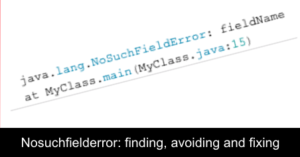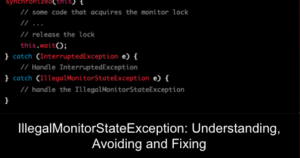Performance tuning is an essential process for maximizing the performance of any software system. Performance tuning aims to optimize the system’s performance by adjusting various settings and parameters. This can involve modifications to hardware, software, or a combination of both. However, it’s important to note that performance tuning can come with tradeoffs. In this article, we will take an in-depth look at software tuning and the use of Application Performance Management (APM) tools to help optimize the performance of your software system.
How do you tune performance tune software?
When tuning software, there are several different approaches that can be taken. One common approach is to analyze the system’s performance by gathering metrics such as CPU utilization, memory usage, and network throughput. This information can then be used to identify bottlenecks and areas that can be optimized.
Another approach is to use profiling tools to analyze the performance of the system at the code level. These tools can provide detailed information about the performance of specific functions and methods, which can help identify areas of the code that are consuming the most resources.
Once the areas that need optimization have been identified, several different techniques can be used to improve the performance of a system. Some common techniques include:
- Caching: Caching is a technique that can store frequently used data in memory to quickly access it without having to be retrieved from a slower storage device.
- Optimizing algorithms: Algorithms can be optimized to improve their performance by reducing the number of operations they perform or by improving their memory usage.
- Parallelism: Parallelism is a technique that can be used to improve the performance of a system by breaking a problem into smaller tasks that can be executed simultaneously.
What tradeoffs should I consider before performance tuning?
While these techniques can improve the performance of a system, it’s important to weigh the potential tradeoffs before implementing them. Some of the most common tradeoffs associated with performance tuning include:
- Increased complexity: Performance tuning can make a system more complex, which can make it more difficult to maintain and debug.
- Increased costs: Performance tuning can require additional hardware or software, which can add to the cost of the system.
- Decreased flexibility: Performance tuning can make a system less flexible, limiting its ability to adapt to changing requirements.
It is important to set performance goals and prioritize them to weigh the tradeoffs. Then measure the performance of the system before and after the tuning, this way you can compare and decide if the tradeoffs are worth it or not.
Using an APM to performance-tune your app
APM tools such as FusionReactor can be a valuable asset in performance tuning. These tools can provide a wide range of information about an application’s performance, including CPU utilization, memory usage, and network throughput metrics. APM tools can also provide detailed information about the performance of specific functions and methods within an application, which can help identify areas of the code that are consuming the most resources.
APM tools can help with performance tuning in several ways:
- Performance profiling: Profiling is the process of analyzing the performance of a software application or system by collecting and analyzing various metrics, such as CPU usage, memory usage, and network throughput. FusionReactor has a suite of profilers, including; code, thread, CPU and memory
- Root cause analysis: APM features like FusionReactor’s event snapshot can provide detailed information about the performance of specific functions and methods, which can help identify the root cause of performance issues.
- Alerts and notifications: APM tools can be configured to send alerts or notifications when performance thresholds are exceeded, which can help identify performance issues quickly.
- Historical data: FusionReactor delivers real-time and historical data tools that can store historical performance data, which can be used to analyze the performance of an application over time and identify trends.
APM tools can also help identify and resolve performance issues in production environments, as they can provide detailed information on how the application performs in real time. They can also help troubleshoot by providing detailed information about the performance of specific functions and methods, which can help identify the root cause of performance issues.
An APM tool like FusionReactor can be a valuable tool for performance tuning by providing detailed information about the performance of an application, identifying bottlenecks, automating the monitoring process, providing alerts and notifications, and storing historical data to analyze performance trends.
Maximizing Performance: An In-Depth Look at Software Tuning and the Use of APM Tools
In conclusion, performance tuning is an important process that can be used to improve the overall performance of a system. However, it’s important to weigh the potential tradeoffs before implementing any changes. By setting performance goals, prioritizing them, and measuring the system’s performance before and after the tuning, you can make informed decisions about whether the tradeoffs are worth it.



